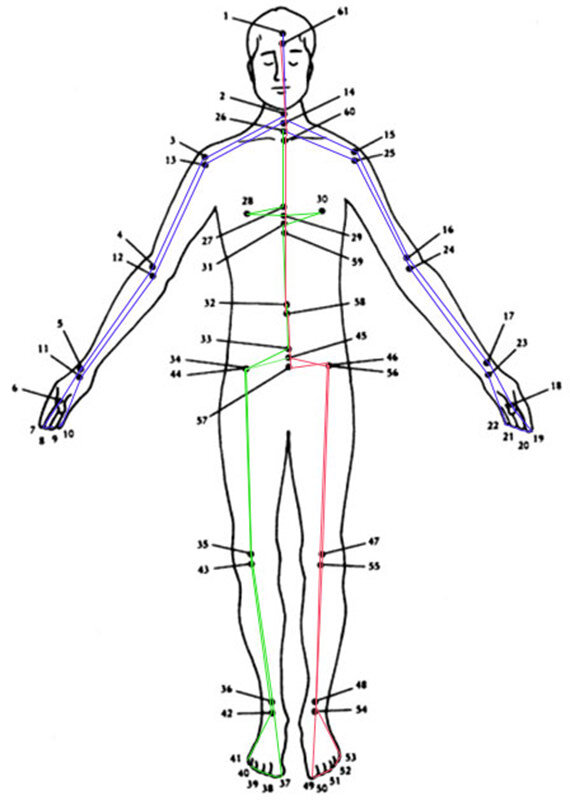DESCRIPTION OF THE 61-POINT RELAXATION
The 61-Point Relaxation practice (known by yogis as Shavayatra) is a specialty of the Himalayan Tradition. This healing practice for deep relaxation and renewed vitality brings profound levels of rest to the body and nervous system, as well as to the senses and the mind. It is also an ideal practice for cultivating awareness, preparing for meditation and yoga nidra, and deepening your connection to prana (life force energy).
The 61-Point Relaxation practice is considered advanced because it requires experience with diaphragmatic breathing and mastery of the basics of systematic relaxation. If you are not familiar with these techniques, we advise that you gain some practical experience with them before attempting the 61-Point Relaxation.
During this practice, your mind will travel to 61 different internal points that correspond to nerve-rich and energy-rich areas of the body known as marma points. Some of these marma points are also chakras. As you move from point to point, you will begin to awaken and stabilize the body and mind, promoting a deeper state of inner consciousness.
ADDITIONAL PRACTICING TIPS
It is very important to allow your breath to flow naturally, and to use the external instruction as a reference point for the next breath. Please make sure not to shorten or lengthen your breath artificially. Ideally, once you learn this practice, you should do it in a self-guided manner instead of using the recording. This ensures that the duration of each breath is not influenced by the duration indicated by the external voice leading the practice. The duration of the instructions will never match the practitioners natural duration of breath. This imbalance takes away from the effortlessness of the practice, and, if too pronounced, the cumulative effect of this imbalance over the course of the practice will take away from the benefit.
Maintain focus on the breath, but gradually allow your mind to attune to the energetic flow of awareness. Be patient. Allow the experience to emerge naturally.
Release any distraction caused by mentally counting the breaths. Instead, use the power of intention to help awaken your latent retentive power.
Notice how your breath gradually slows and deepens (while growing more subtle) over the course of the practice.
If you fall asleep, that’s okay! Discontinue the practice when you wake up. If you become distracted and lose your awareness briefly, continue the practice from where you were.

